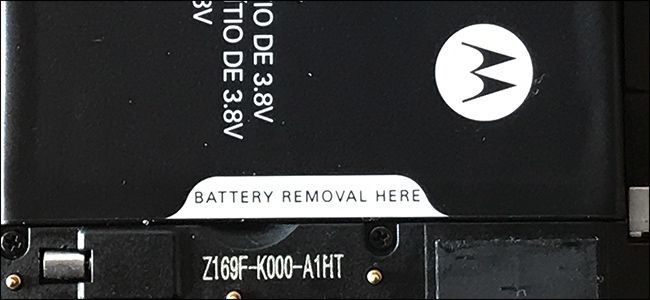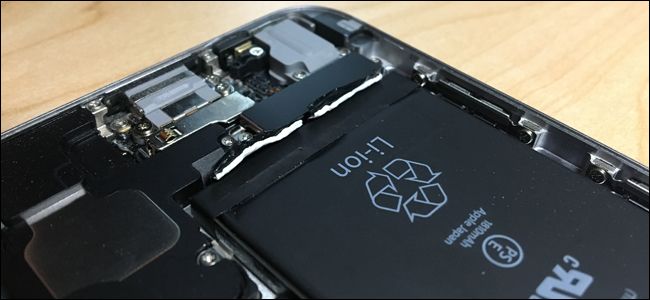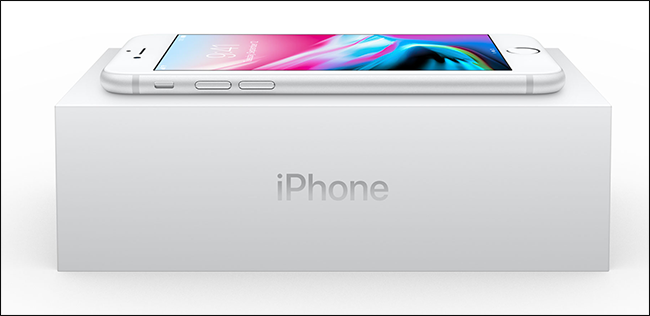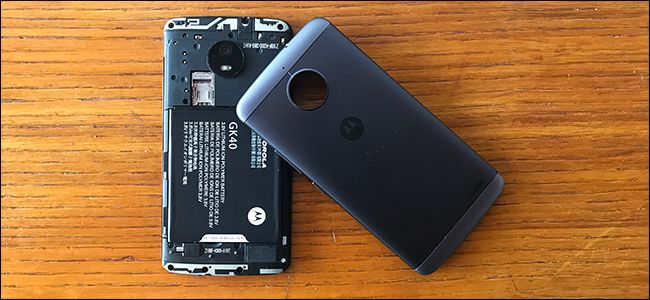Quick Links
You can speed up your iPhone by replacing the battery, but you'll have to take it to Apple, since the battery is not designed to be user-replaceable. This has left people wondering whether they'd prefer removable batteries. I'm here to say: you wouldn't.
Very few phones come with a removable battery anymore, where you can just remove the back cover and pop the battery out. Instead, to varying degrees, the battery is glued and screwed into the internals of the phone. Even just removing the back cover requires special tools and courage. And this is a good thing.
Removable vs. Replaceable Batteries
There’s a difference between removable and replaceable batteries. A removable battery is, well, easily removable. Slide open the back panel and you can swap it out for another. This was a big selling point on early Android phones because you could carry a second battery to keep your phone running all day (although to be honest, I never saw anyone do that).
A replaceable battery is different; it’s a battery that, at some point can be removed and replaced with another, but that for the entirety of its life is kept inside the phone. This is what most modern phones have.
While it’s generally advisable to get your devices professionally repaired, things like replacing a phone battery can be surprisingly easy.
Phones are Better Without User-Replaceable Batteries
I’ve got an iPhone 7 Plus. It’s a huge phone. Seriously, I’ve had TVs with smaller screens. But it still fits perfectly in my pocket. This is partly because it doesn’t have a removable battery. Apple (and Samsung, and LG, and Google, etc.) have been able to engineer things so that every component fits together neatly. In early phones, this wasn’t an issue because space wasn’t at such a premium. Now it is.
It’s even more clear with the iPhone X. Rather than having a single battery, it actually has two so that Apple can cram in even more components. You don’t get a futuristic phone without making some shrewd design choices.
As well as allowing for smaller devices with tighter internal tolerances, phones without removable batteries have other advantages.
Most modern smartphones are made from premium materials like aluminium and glass. These work great when you have a sealed phone, but if you want the user to be able to remove the back panel quickly and easily, they just don’t work: glass shatters and aluminium bends. Instead, you need to use something like plastic, which looks and feels cheap. No manufacturer wants their premium phone to look and feel like a low-end knockoff.
Water is the bane of pretty much all electronic things (I learned this from Pokémon). A single drop in the wrong place can be enough to fry your devices. There’s a reason water damage isn’t covered under most warranties. As a result, there’s a big push in the last few years for manufacturers to give their phones better and better waterproofing. Things have got to the point that you can now happily use an iPhone 8 or X to take photos in a shallow swimming pool or watch YouTube in the shower (though on general principle, it’s something we wouldn’t overly recommend...even if I personally do it all the time).
Now this isn’t to say that a clever manufacturer couldn’t solve all these issues. Sure, there were waterproof phones with removable batteries, they just had big rubber gaskets that could stand up to hundreds of uses. And if some company really wanted to make a removable metal back, they could use a sturdier material than aluminium. But these aren’t cheap solutions; why add $50 to the cost of making a phone with a removable back, when you could just make one without, especially when most users don't care?
What it boils down to is this: manufacturers have given up on removable batteries so that they can smaller waterproof phones from premium materials for a lower cost. And that's a worthy tradeoff.
You Still Have a Choice
And, if removable batteries are of the utmost importance to you, there are still a few phones that have them. You just won’t be able to get a premium phone (or any phone from Apple). But that's mostly okay: cheaper phones have gotten much better. The Motorola Moto E4 I use as an Android test device is a great cheap phone with a removable battery. While I love my iPhone, I could totally get by just using it (as long as I wasn’t trying to take good photos).
Your best bet is to check out phones from LG and Motorola who, of the major Android manufacturers, seem to have been most willing to to keep decent options around with removable batteries. Specifically, then $399 LG V20 and the $119 Moto E4 are the best options currently on the market at the mid and low end.
Again, you won't be able to find this feature in many premium phones, but that's the tradeoff you make: if you want a phone with premium materials and premium features (like waterproofing and slim sizes), you have to pay the premium price---which includes the cost of service for getting that battery replaced.
While it might seem like a kick in the teeth to have to pay to have your smartphone battery replaced by the manufacturer after a year or two because your phone won’t hold a charge as long as it used to (or is being intentionally throttled, Apple), $80 isn't that bad---that's well worth it to get an extra year or two out of a device that originally cost $700.
Similarly, a removable battery might sound nice on paper, but the benefits of not having one are (for most people) worth the extra hassle.





